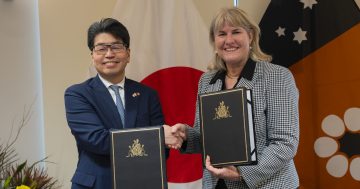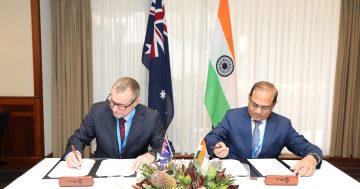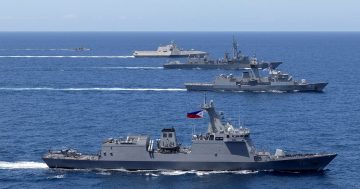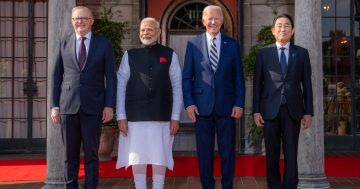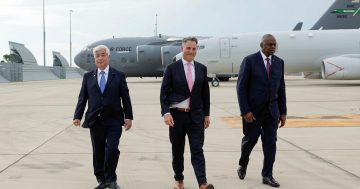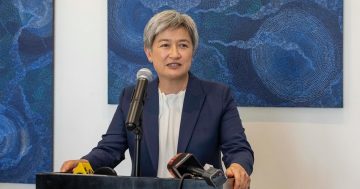Sana Hashmi* says middle powers have the ability to influence the current fluid situation in the Asia-Pacific — providing they play their cards well.
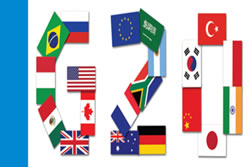 The first two decades of the 21st century have been shaped by ever-growing competition between the United States and China.
The first two decades of the 21st century have been shaped by ever-growing competition between the United States and China.
In Asia, this competition is rapidly transforming into a fast-paced rivalry between the two major powers.
The consequences of great power politics and competition are many, with most of it having a bearing on the small and middle powers of the region.
The US-China rivalry has exposed middle and small powers to dilemmas in the foreign, security, and economic fronts since most of them are deeply linked with either or both of the two great powers.
The resultant concerns in the middle power capitals have been amply echoed by their respective leaders who don’t like to choose between Washington and Beijing.
In order to avoid this dilemma, numerous middle powers are trying to swim away from both China and the US and display more autonomy in their foreign and economic policies.
This is driven by their decision to not let either of the great powers steer their foreign policy priorities and choices. However, it is easier said than done.
Economic and trade dependence on China on one hand and strategic dependence on the US on the other, have pushed several middle powers into deep dilemmas.
From South Korea to Australia, these concerns loom large over the policy-making circles of middle powers with no easy solutions in sight.
Middle powers are more vulnerable to sudden changes in the international system, but it is equally justified to say that middle powers have more stakes in regional and global order.
However, it would be unfair to argue that middle powers have no say in influencing their respective regional orders and also making a contribution in setting the trends in the international order.
Compared to small powers, that have neither great stakes nor great interests, middle powers try to benefit from the status quo.
This hedging strategy has been their most preferred modus operandi. Not committing to either of the major powers has its own good and evil sides.
In fluid strategic situations, middle powers tend to thrive as long as they are able to play their cards well.
The changing strategic dynamics and the COVID-19 pandemic have also led to the possibility of middle powers playing a more defined role.
The contribution of middle powers in shaping the emerging Indo-Pacific order is of critical importance.
While the inclusion of India, a rising major power, at the international high-table has been one of the drivers of the Indo-Pacific construct, restraining China’s ever-aggressive postures has been another significant motive.
The outlook of the Association of South-East Asian Nations (ASEAN) on the Indo-Pacific is an example of how smaller nations can put their energies together in trying to fit into a rapidly changing world.
Middle powers such as Australia and Indonesia have been keen to support the Indo-Pacific order.
Similarly, South Korea and New Zealand are also gradually shedding inhibitions in joining the US, India, Japan and the rest in supporting a rules-based, open, and inclusive Indo-Pacific order.
Moreover, some of the European countries have also embraced the Indo-Pacific and come out with their own visions and strategy documents explaining their interests, objectives and concerns.
The US Administration of President Donald Trump has not invested enough in Asia beyond India, Japan, Australia, and the Korean Peninsula, thereby leading countries to bolster their ties with one another.
However, that seems to be changing with the revitalised approach of the forthcoming Administration of President-elect, Joe Biden.
What may be witnessed in the time to come is further engagement and cooperation among middle powers, and at the same time, middle powers playing a greater role in stabilising the changing international order.
*Sana Hashmi is a visiting fellow at Institute of International Relations, National Chengchi University in Taiwan, and a non-resident fellow at Taiwan’s NextGen Foundation. She is former consultant with the Ministry of External Affairs.
This article first appeared on the website of the Observer Research Foundation.



